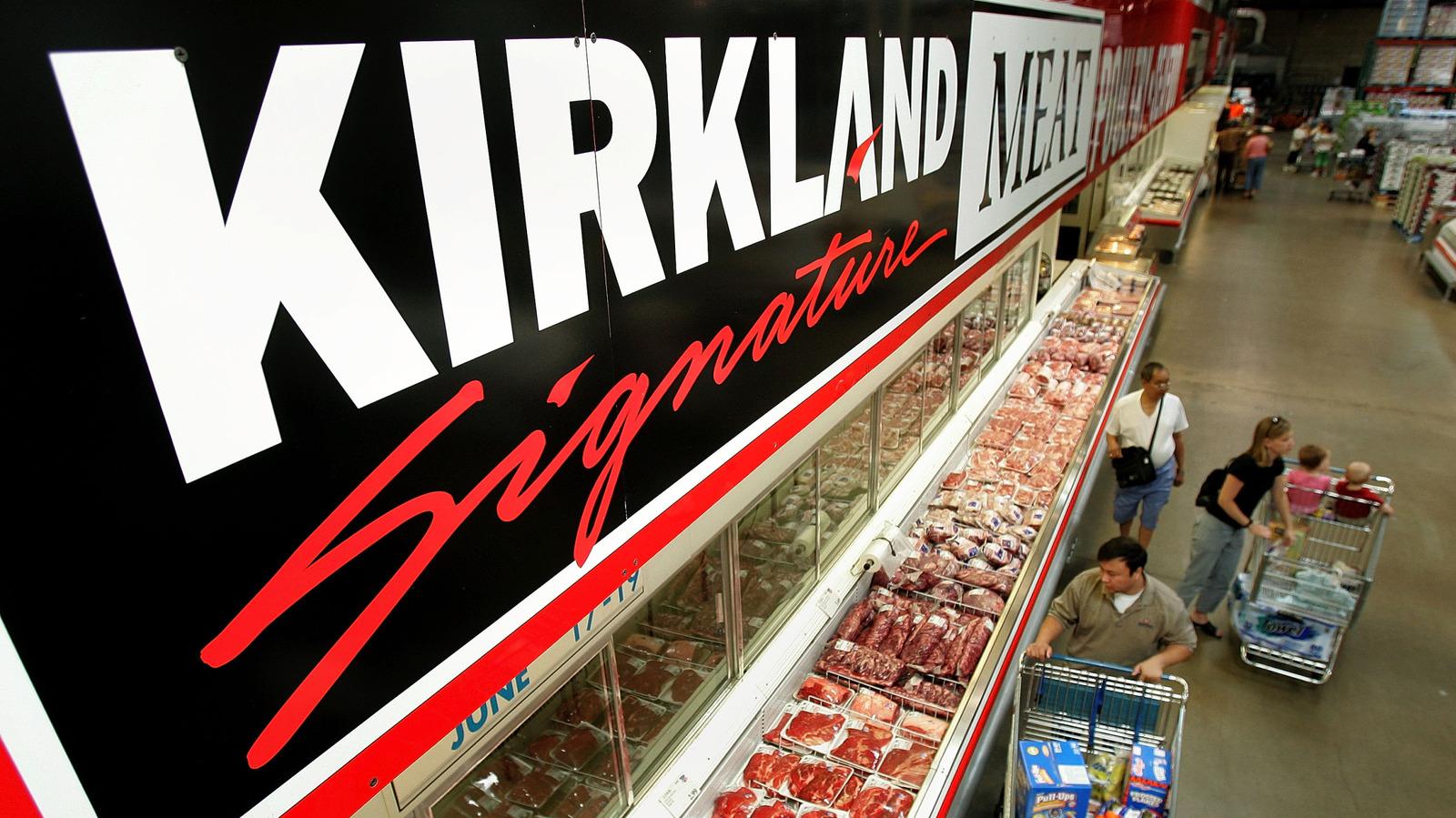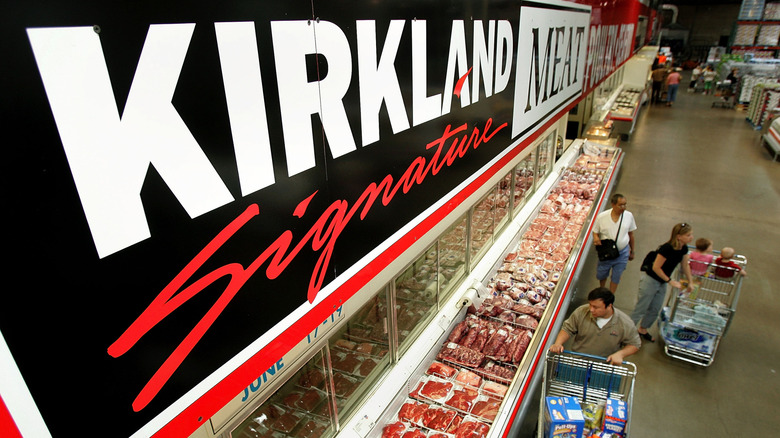
Tim Boyle/Getty Images
Walk into a Costco and you'll find two brand options for most of your standard grocery items. There's the familiar national brand, usually sitting near a Kirkland Signature alternative that significantly undercuts its price. Private labels (aka generic brands) have long had a reputation for being cheaper at the expense of taste and quality. That's not really the case with Costco's flagship brand.
Kirkland products are more affordable — often 20% less — yet they maintain high-quality standards. To keep its private label prices low, Costco has several tricks up its sleeves. And these secrets have put name brands on the defensive, forcing many to lower prices to be competitive on Costco's shelves.
Finding ways to stay cheap in an industry built on ultra-thin profit margins is an ongoing process for the big-box chain. Since Costco introduced Kirkland Signature in 1995, it has expanded to offer around 550 different products. Legions of Kirkland devotees trust the brand for everything from nuts and olive oil to batteries and booze. While Kirkland accounts for roughly 15% of Costco's products, it makes up around 30% of all sales for the store. Thankfully, Costco has decided not to exploit this success by raising its private label prices to match those of the name brands. Here's how the wholesale giant keeps Kirkland Signature so cheap.
With one private label, Costco has lower branding and marketing costs
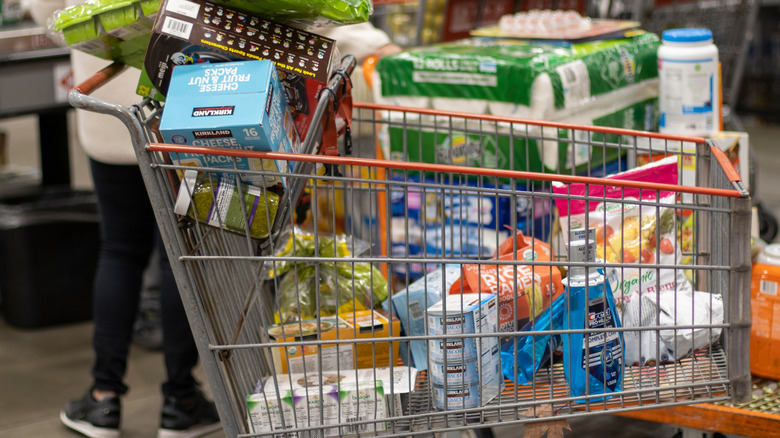
Tada Images/Shutterstock
The idea behind private labels is that the retailer sources the product through a manufacturer and then handles the branding internally. That's cheaper than buying premade goods from national brands that have additional costs associated with marketing and distribution. By cutting out the intermediary and eschewing marketing and fancy packaging, the retailer can set its brand price lower and offer a cheaper alternative. Costco takes this private label playbook a step further by making Kirkland Signature its exclusive house label.
This goes against conventional retail wisdom employed by competitors like Walmart, Target, and Sears, which all have multiple private labels. The strategy is to use different brand names for different categories of products (electronics, baked foods, home goods). If a store puts everything under one name, customers may get turned off from the entire line if they have a bad experience with just one product. Costco actually went the multi-label route until co-founder Jim Sinegal decided that consolidating under Kirkland — named after the company's original headquarters in Kirkland, Washington — would be easier for customers to identify.
The gamble eventually paid off as Kirkland established a reputation for matching and often surpassing the quality of national brands. Plus, Costco saves even more on branding and packaging by settling with just one name and logo. Take a look at Kirkland's extraordinary basic labels, and you can tell the company is not wasting money on artful packaging.
Costco strategically hunts for new Kirkland offerings in the market
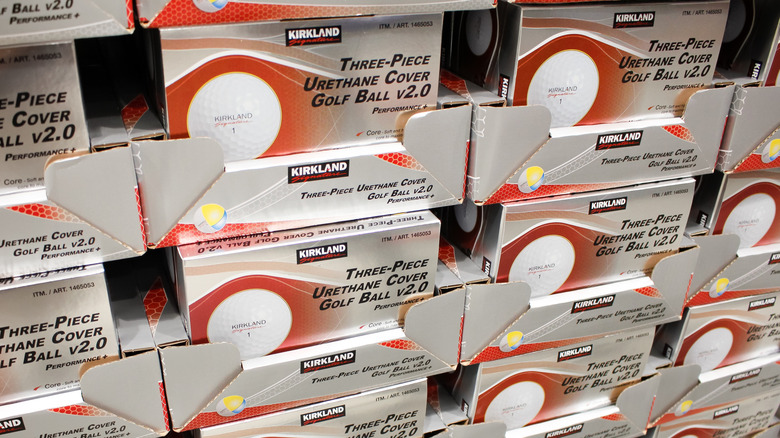
The Image Party/Shutterstock
Costco does not take a haphazard approach to deciding which products it will source and sell under the Kirkland brand. The process of introducing a new private label product to market involves several steps, starting with determining market viability. Costco's buyers strategically search for opportunities where national brands are overcharging consumers or commodity market trends don't coincide with prices. For example, if companies that sell golf balls raise prices, yet the manufacturing costs remain the same, Costco buyers will pounce. It's the perfect opening for Kirkland to do what it does best — show consumers that private label products can be just as good. Needless to say, many name brands would rather not have Kirkland adding competition to the market.
From there, Costco collaborates with manufacturers to ensure its cheaper version of the product meets stringent quality control standards. The final decision on whether a product receives a Kirkland release comes down to Costco's CEO. While it may seem like you're inundated with Kirkland products throughout every aisle (stockers literally shelf these items at eye level for greater sales impact), the store takes its time to develop new releases. Costco has even pumped the brakes on some products, such as razors, soda, and light beer, because it could not produce a release that would hold up to Kirkland's quality reputation. That said, Kirkland isn't entirely above keeping products with subpar ingredients.
Partnering with national brands leverages existing production lines
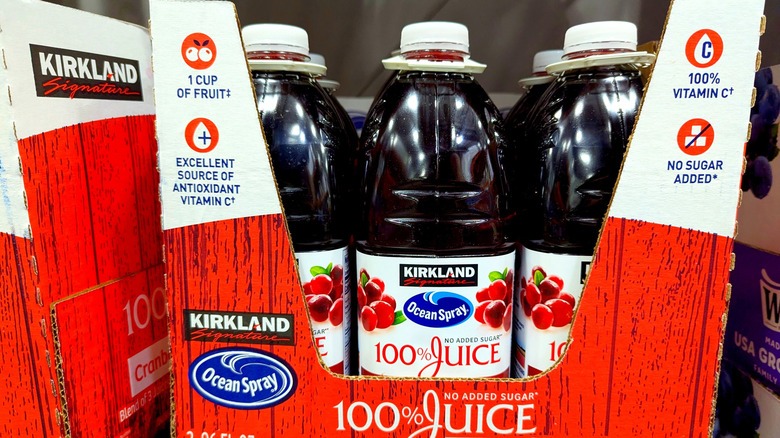
PJ McDonnell/Shutterstock
Costco does not make Kirkland products internally. Instead, it partners with third-party manufacturers that can produce the goods at an appropriate scale and price. In some cases, the best option is actually the national brand.
That's right, many Costco items are sourced from name-brand manufacturers while carrying the Kirkland name. Some brands like Starbucks and Ocean Spray are open about these partnerships and include their logos next to Kirkland on the packaging. Other partnerships are more hush-hush. The Cruising Costco fan website has outed several name brands behind Kirkland Signature, including Grey Goose as the vodka distiller, Duracell for batteries, and Reynolds Wrap for aluminum foil.
These partnerships enable Costco to save money by utilizing established production lines with proven quality control. For example, Kirkland partnered with national brand Bumble Bee Foods to produce its canned tuna after an executive got fed up with the poor quality of other options. National brand manufacturers often agree to these deals with Costco because the warehouse chain's shopper loyalty helps to ensure sales. It's a smart move, as inflation continues to draw more shoppers to cheaper private labels over national brands.
Kirkland takes advantage of economies of scale
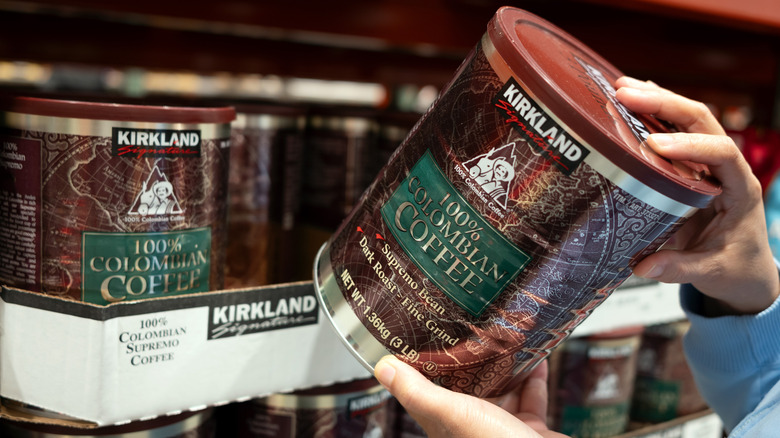
pimpampix/Shutterstock
As a wholesale club, Costco believes that bigger is better, making the retailer a greater benefit for members who prefer stocking up by the jug or boxful. A can of Kirkland coffee might look expensive at first glance, but it's a deal when you consider you're getting 3 pounds of ground Colombian roast. Shoppers know that this isn't the place to go for a quick milk run.
By offering food and other items in bulk, Kirkland ensures larger sales upfront that pay off in the long run for its members. A CNET report suggests a typical consumer could save over $1,000 a year by opting for bulk quantities at Costco. Plus, bigger volumes mean fewer trips to the store and less package waste.
Costco leverages economies of scale in much the same way with Kirkland's manufacturers and suppliers. Its buyers can negotiate better prices and increase their purchasing power by securing larger quantities. Manufacturers have an incentive to offer better terms, as it will secure large-volume sales. Costco can then pass these savings on to members with lower prices on Kirkland goods.
Managing inventory is easier, and less wasteful, with fewer products on the shelves
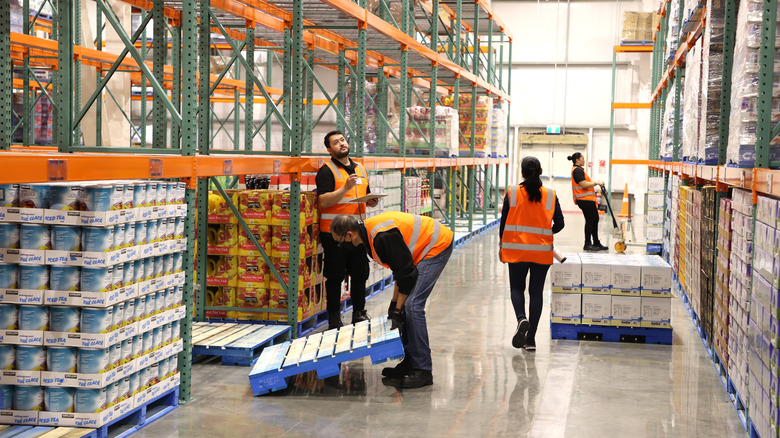
Phil Walter/Getty Images
With all those vats of honey and tubs of lard on offer, it may seem like Costco has a lot of items for sale. However, the untold truth of Costco is that this wholesale retailer stocks a minimal number of products in each category. It just sells a lot of the few products it carries.
Costco supplies only around 4,000 different stock-keeping units (SKUs) — a relatively minuscule amount compared to the over 100,000 that Walmart carries. Instead, Costco focuses on selecting just the highest quality options, which often includes Kirkland and one other brand in each product category. Fewer SKUs make stocking and managing inventory much easier and more cost-effective at Costco. Warehouses are then more efficient with fewer employees, and those savings on wages get reflected in cheaper Kirkland products.
Fewer products also allow the store to optimize restocking efforts. Costco does not need to worry as much about wasting shelf space on products that may not sell. Instead, it can better track all the SKUs and focus on selling larger quantities. Some shoppers also prefer a smaller selection, as it reduces the burden of making decisions. Costco co-founder Jim Sinegal has called sticking to the limited-SKU model one of the most important disciplines in the company's success.
Costco caps its markup on Kirkland products
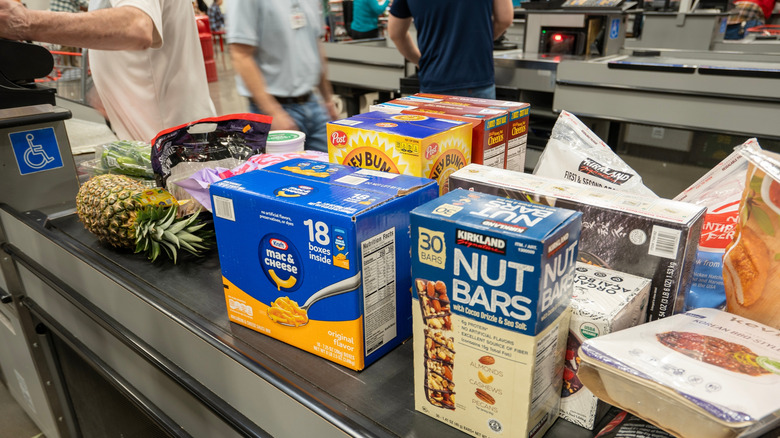
Tada Images/Shutterstock
Grocery stores typically add a 20-25% markup to the cost of goods sold, sometimes more to their cheaper-to-source private label goods. That added percentage is an industry standard to ensure the retailer can earn a profit after covering operating expenses like wages, advertising, and utilities. Costco caps its product markup to 15% for Kirkland goods and 14% for other brands. It doesn't take a mathematician to figure out that this equals significant savings in the final price. Since the cost of Kirkland goods sold is significantly lower, Costco can still offer these products at a lower price for customers, even with the additional 1% markup.
Why would Costco live with such small margins when profits are already pennies on the dollar for so many big-box chains? Aside from providing a greater value to members, it helps the retailer move products more quickly. Lower prices encourage faster inventory turnover, which lowers warehousing costs and keeps the shelves stocked with fresher items. Trusting this turnover cycle can be risky, but the bet has been paying off. Kirkland's sales for 2024 were $86 billion, surpassing those of big-name brands Kraft-Heinz and Procter & Gamble.
Kirkland buyers leverage strong relationships with suppliers
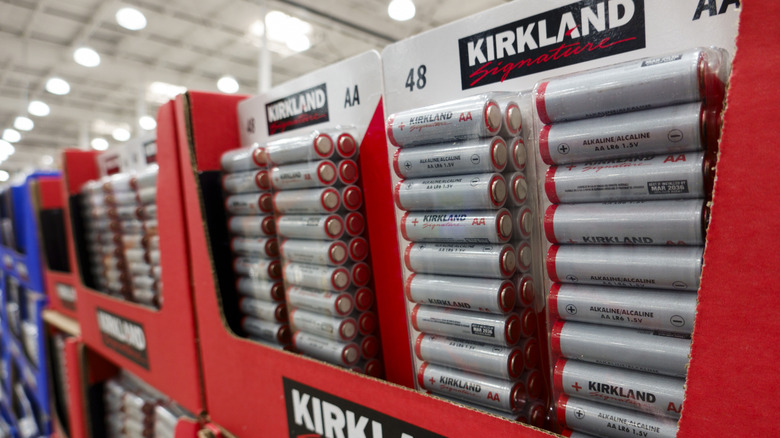
Kevin Carter/Getty Images
Costco may have the clout and retail apparatus to attract customers. However, it's up to Kirkland buyers to maintain partnerships with manufacturers and ensure the private label's products are just as good as the name brands' items. These procurement specialists are known for their in-depth understanding of the production process, helping them to establish long-term relationships with suppliers.
Costco's approach to procuring strong relationships is to ensure mutual benefits for the manufacturers. Case in point is the retailer's partnership with the Kimberly-Clark Corporation, which makes Kirkland's diapers. The only other diaper choice for members is Huggies, also produced by Kimberly-Clark. Kirkland secures a proven diaper supplier, and the manufacturer wins regardless of which brand the customer chooses.
Since Costco bases its business on economies of scale, Kirkland buyers can focus more on sales quantity than profit margins. Its products sell fast and in larger volumes, two very enticing negotiating points. Furthermore, Costco's limited-supply model with fewer options for shoppers makes shelf space prime real estate at the store. All this adds up to plenty of bargaining chips to lower costs while giving the public a superior product.
Costco controls Kirkland's supply chains

Elliott Cowand Jr/Shutterstock
A secret weapon behind Costco's success is its ability to control supply chain costs through streamlined logistics. With Kirkland's direct partnerships aiming to eliminate distribution intermediaries, suppliers can send products directly to Costco stores. By limiting the number of entities that handle a delivery, the retailer reduces transportation and storage costs.
Costco maintains a "no touching" supply chain policy, which means products stay on delivery pallets until they reach the store. It even works with suppliers to ensure that deliveries are efficiently wrapped and packaged, thereby improving stocking productivity. Another piece of the supply chain puzzle is following the just-in-time management strategy designed to replenish inventory only when it runs out.
Have you noticed that Costco stores look a lot like warehouses? That's another cost-saving measure. These dual-purpose sites are large (usually 146,000 square feet), minimalist in design, and built so workers can easily transfer pallets to shelves as easily as possible. The simplistic setup goes against the grain of typical supermarkets that spend time drawing in shoppers with displays and carefully shelving products. Costco embraces the warehouse ambiance with its wide cement aisles and products sold in pallets. It's all about avoiding unnecessary expenses and passing those savings on to customers with lower Kirkland prices.
Membership fees help to offset lower prices
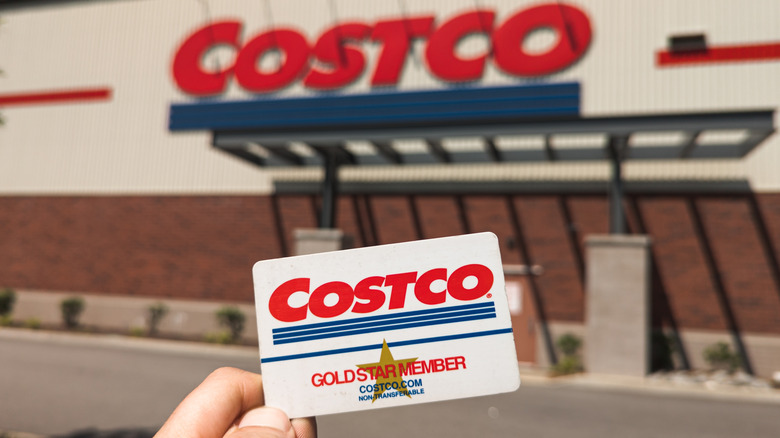
PJ McDonnell/Shutterstock
Costco's yearly membership dues provide a steady stream of revenue that compensates for the low-margin grocery sales. As of 2024, the retailer had around 136 million cardholders and a base annual fee of $65 (executive members pay $130). Costco claims its membership fees generate over $1 billion annually, offsetting quite a few rolls of bargain-priced Kirkland toilet paper. You'd think some consumers would be deterred by having to pay for the privilege of shopping. However, the membership model is a major factor in Costco's success. For starters, it incentivizes visits as shoppers want to make the most of their investment.
Costco works hard to offer something special to members — a pleasurable shopping experience where they can discover surprising deals on bulk items. The oft-discussed "treasure hunt" aspect of Costco shopping, with unmarked aisles and products randomly moving around the store, also has a unique psychological effect on customers. But the biggest membership driver is the exclusivity and popularity of Kirkland Signature. With Kirkland bringing in so many customers, it's good business for Costco to continue subsidizing those prices with a capped markup. While Costco raised its membership prices in 2024, there wasn't much backlash. The company reported a 7.6% increase in paid memberships last year, according to USA Today.
Costco doesn't spend money on Kirkland advertising
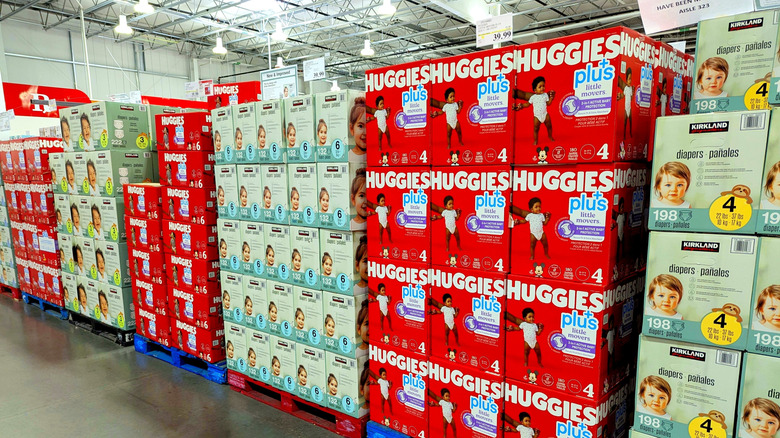
PJ McDonnell/Shutterstock
When you're the second most successful — based on turnover in 2024 — grocery chain in the U.S. with millions of paying members, advertising isn't a necessity. Word-of-mouth, plentiful in-store samples, and internal promotions are enough to keep the business growing and earning good press. Still, Costco's almost complete avoidance of traditional advertising is remarkable.
A major reason Costco doesn't advertise is that this expense would result in higher prices for customers. Of course, Costco carries national brands that do advertise, and they ultimately pass that expense down to shoppers.
For executives, keeping the cost of Kirkland products low outweighs any benefit from a commercial. Co-founder Jim Sinegal even called advertising bad for business in a 2013 interview with The Motley Fool. "The most significant advertising is when other people are saying nice things about you," said Sinegal. Costco certainly finds a way to enter mainstream consciousness without advertising, whether it's being featured in TV shows, through social media personalities, or fan websites. Economic analysts have cited Costco as having the best customer loyalty in the industry due to its membership model, value, and convenience.
Costco keeps overhead down with low employee turnover
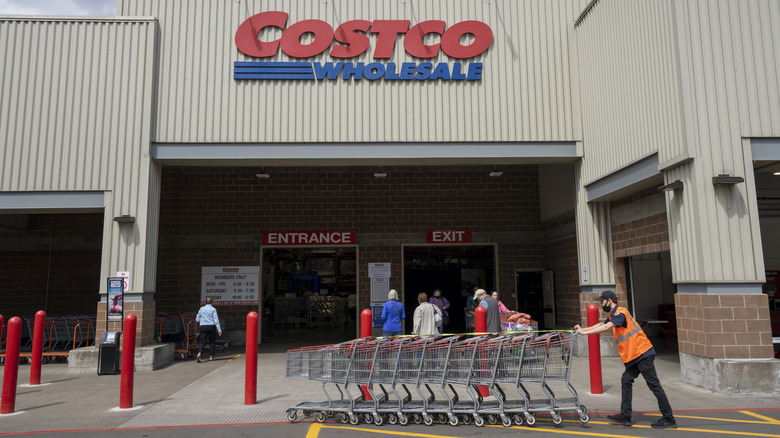
Hapabapa/Getty Images
It may seem like a stretch to draw a direct connection between happy employees and low product prices. But when you consider that losing an employee can cost a company half to twice their annual salary, it's easy to see how retention affects the bottom line. The annual employee turnover rate in the retail industry is over 50%. At Costco, the rate is under 9%. That high retention significantly lowers overhead costs, which trickle down into better prices.
CEO Ron Vachris, who started with Costco as a warehouse worker in 1983, says it all comes down to a positive company culture. It also doesn't hurt that Costco pays employees more on average than the competing wholesale chain Sam's Club. Higher employee retention helps to keep the warehouses working more efficiently, maximizing sales. This is especially important at a retailer like Costco, which has fewer workers than other big-box stores. If the company spends a little more on wages, it's worth it for the improved productivity. For Costco, this isn't about generosity. Good labor practices are simply smart business.



